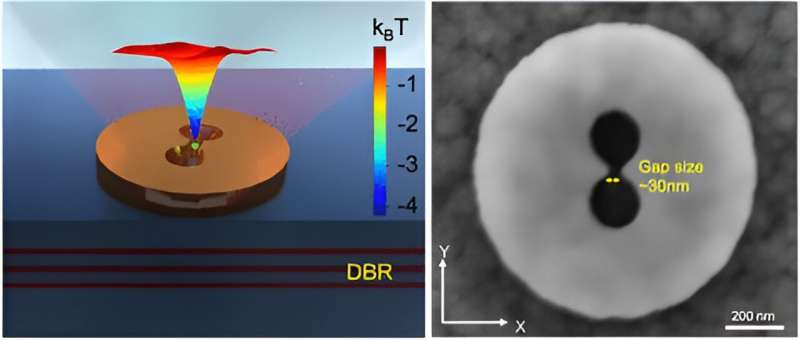This article has been reviewed according to Science X's editorial process and policies. Editors have highlighted the following attributes while ensuring the content's credibility:
fact-checked
peer-reviewed publication
trusted source
proofread
Novel research could provide better analysis of the role of extracellular vesicles and particles in diseases, cancer

Justus Ndukaife, assistant professor of electrical and computer engineering at Vanderbilt University, is leading innovative research that more effectively traps nanosized extracellular vesicles and particles (EVPs) to analyze their roles in cancer, and neurodegenerative diseases.
The research, done in collaboration with the lab of Vanderbilt Professors Robert Coffey and Kasey Vickers, was recently published in Nano Letters.
EVPs—including recently discovered exomeres and supermeres—are thousands of times smaller than the thickness of a human hair. By trapping and manipulating them, researchers aim to better understand how cells package molecules and interact with one another, which may also shed light on the formation of diverse diseases, like cancer and Alzheimer's.
However, when using optical tweezers, there's a risk of photothermal heating that could adversely affect the EVPs. In their paper, Ndukaife and his team discuss using an anapole antenna to condense the electromagnetic energy to the nanoscale and successfully trap EVPs using a lower laser power.
"Since the proposed trapping system is low-loss, it precludes local temperature rises and thus ensures that important biological particles and molecules remain intact," according to the paper.
The development of optical tweezers was recognized with the 2018 Nobel Prize in Physics for their efficacy in trapping single cells and larger EVs. Ndukaife developed the first-ever opto-thermo-electrohydrodynamic tweezer (OTET) that can trap and manipulate objects on the sub-10 nanometer scale at Vanderbilt in 2020.
More information: Ikjun Hong et al, Anapole-Assisted Low-Power Optical Trapping of Nanoscale Extracellular Vesicles and Particles, Nano Letters (2023). DOI: 10.1021/acs.nanolett.3c02014
Journal information: Nano Letters
Provided by Vanderbilt University





















